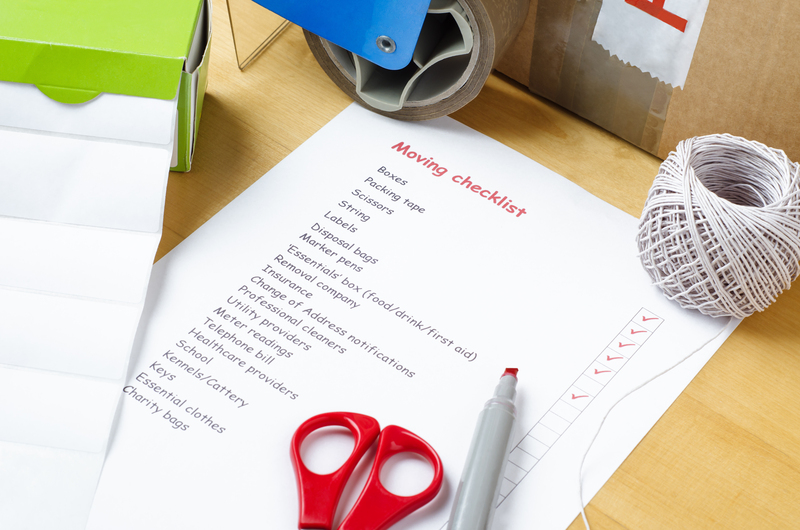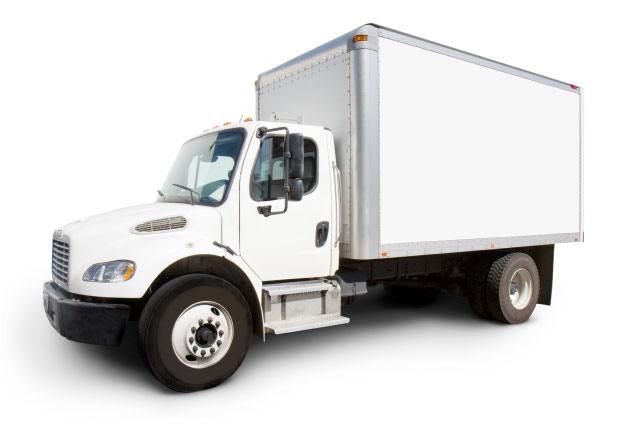Long-Term Sofa Storage: Proven Expert Tips
Posted on 17/05/2025
Long-Term Sofa Storage: Proven Expert Tips
Storing your sofa for a prolonged period isn't just about moving it out of your living space - it's about ensuring this significant piece of furniture remains in top condition until you're ready to use it again. Proper long-term sofa storage requires a few strategic steps, attention to detail, and a bit of expert advice. In this comprehensive guide, furniture care specialists share proven tips to help you protect your sofa during long periods of storage.
Why Proper Sofa Storage Matters
Your sofa is an essential investment in comfort and style. Improper storage can lead to:
- Mold and mildew growth on upholstery and frame
- Staining and fabric deterioration
- Cracked or warped wood components
- Pest infestations and unpleasant odors
- Loss of structural integrity
Whether you're between moves, downsizing, or simply needing extra space, storing your sofa safely over the long term will save you the hassle and cost of repairs or replacement.

Preparing Your Sofa for Storage
1. Clean Thoroughly Before Storage
Preparation is key to ensuring your sofa survives *long-term storage* unscathed. Here's how to clean it properly:
- Vacuum All Surfaces: Use a vacuum with an upholstery attachment to remove dust, dirt, and hair from every part - including under seats and cushions.
- Spot Clean Stains: Apply a fabric-appropriate cleaning solution to any visible spots and stains. For leather sofas, use a gentle leather cleaner and conditioner to prevent drying and cracking.
- Dry Completely: Ensure all cleaning solutions have fully dried before moving onto the next step. Any residual moisture can cause mildew when the sofa is in storage long-term.
2. Disassemble Your Sofa if Possible
Many modern sofas are designed for easy disassembly. Remove legs and detachable arms, set aside loose cushions, and keep all hardware together in a sealable bag. Disassembling furniture reduces its bulk, makes it easier to maneuver, and can help prevent damage to the frame during transportation and storage.
3. Protect With the Right Materials
- Breathable Covers: Avoid wrapping your sofa in plastic, which can trap moisture. Instead, use furniture covers made of breathable cotton or microfiber, which offers protection while allowing air circulation.
- Blankets and Padding: For added cushion and safety, layer moving blankets or quilted pads around delicate corners and legs. Secure them with soft packing twine - never tape directly onto the upholstery or wood.
- Wood Protection: For sofas with exposed wood, wrap these areas in acid-free paper before adding blankets. This step prevents scratches and extends the wood's finish during extended sofa storage.
Choosing the Best Storage Environment for Sofas
1. Opt for Climate-Controlled Storage Units
If you're serious about long term sofa storage, renting a climate-controlled storage unit is one of the best investments. Here's why:
- Temperature and Humidity Regulation: Traditional storage units are susceptible to drastic temperature changes - leading to expansion and contraction of sofa materials, especially wood and leather.
- Prevents Mold Growth: Humidity control eliminates the main risk factor for mold and mildew.
- Enhanced Pest Control: Sealed, managed environments deter insects and rodents.
While climate-controlled units may cost more than basic storage, the peace of mind and long-term savings far outweigh the expense.
2. Elevate Your Sofa Off the Floor
Always place sofas on wooden pallets or sturdy, stackable blocks. Keeping furniture off the ground:
- Reduces contact with dust and dirt
- Protects against potential flooding or leaks
- Allows for better air circulation around your stored couch or sofa
3. Mind the Layout and Airflow
Store your sofa away from windows or sources of natural light, as UV exposure can fade colors. Don't press your sofa directly against any walls - instead, leave several inches on all sides to allow for adequate airflow, further preventing moisture buildup and musty odors.
Expert Tips for Maintaining Sofas in Long-Term Storage
Tip 1: Avoid Overcrowding Your Storage Unit
Crowded units increase the chance of unintentional pressure, scratches, and more severe damage to delicate sofas. Arrange items so there's a dedicated space for your sofa, and nothing is stacked on top or leaning against it.
Tip 2: Use Moisture Absorbers
Even in climate-controlled environments, adding silica gel packets or commercial moisture absorbers (DampRid, for example) gives your long-term sofa storage an extra barrier against dampness. Replace absorbers every few months.
Tip 3: Revisit and Inspect Periodically
If possible, open your storage unit every few months to check for early signs of moisture, pests, or damage. Re-fluff cushions, air out covers, and dry any unexpected condensation. Regular checks prevent minor issues from turning into costly repairs.
Tip 4: Avoid Using Harsh Chemicals or Adhesives
When securing sofa covers or padding, don't apply tape directly to any part of the sofa. Adhesives can leave residue, discolor fabric, and strip wood finishes over time. Choose soft twine or elastic straps instead.
Tip 5: Mind Your Movers
If hiring professionals or enlisting friends, ensure they understand the importance of careful lifting and carrying. Sofas should always be transported upright and never dragged, as this can strain frames and ruin upholstery, especially after months in storage.
Packing Tips for Special Sofa Types
Leather Sofas
- Condition the leather before storage with a high-quality, pH-balanced leather cream.
- Wrap in cotton or soft cotton sheets rather than synthetic fabrics, which can trap humidity.
- Never fold or bend, as this causes permanent creasing.
Sectional Sofas
- Disassemble each section, cover individually, and label hardware bags for reassembly ease.
- Store components upright and side-by-side, never stacked flat.
Antique or Delicate Sofas
- Consult a furniture conservator or restorer for specific recommendations.
- Consider a sofa "tent" inside the storage unit for added airflow and protection.
What to Do When Retrieving Your Sofa After Long-Term Storage
Step 1: Inspect Thoroughly
Remove all coverings, check for moisture, mildew, bugs, or physical harm. If your sofa was well-protected, there should be no surprise damage.
Step 2: Refresh
- Vacuum all surfaces again
- Let cushions air out in a shaded, breezy area (never direct sun)
- Wipe down wood and metal components with an appropriate cleaner
Step 3: Reassemble Carefully
When putting legs, arms, or other components back together, check for any loose screws or unstable joints. Tighten all hardware; if needed, consult your sofa's original instructions.

Frequently Asked Questions About Long-Term Sofa Storage
How long can I safely store a sofa in a storage unit?
With proper preparation, a sofa can remain in great condition for several months to multiple years, especially in climate-controlled units. Regular inspection is key to avoid long-term deterioration.
Is it okay to cover my sofa with plastic for storage?
No; plastic traps humidity, leading to mold and mildew. Use breathable fabric covers for optimal protection.
What's the best way to prevent pests?
- Clean furniture thoroughly before storage
- Use sealed storage units
- Add natural deterrents, such as cedar blocks or lavender sachets
Can I store my sofa in the garage or a basement?
These areas are often subject to temperature fluctuations and excess moisture - both are hazardous for long-term sofa storage. If possible, rent a specialized storage unit for best results.
Conclusion: Store Your Sofa Like a Pro
Protecting your investment with expert sofa storage tips is a smart move. Clean and prepare your couch, choose the right storage environment, use high-quality packing materials, and stay vigilant with maintenance. When you follow these proven methods, your sofa will emerge from storage as stylish, sturdy, and comfortable as the day it was packed away.
If you're planning long-term storage for your sofa or couch, these expert-curated steps will ensure your prized piece is ready for many more years of comfort and style. Safe, careful storage today ensures a stress-free living space tomorrow.





